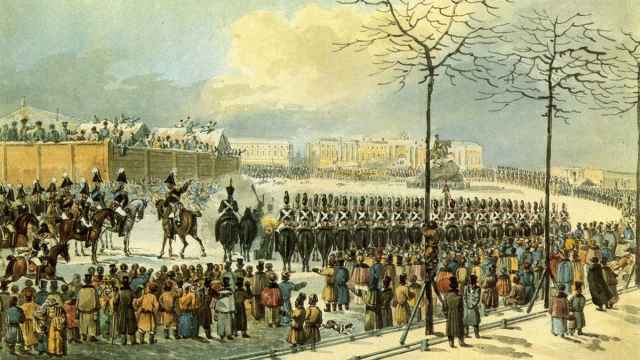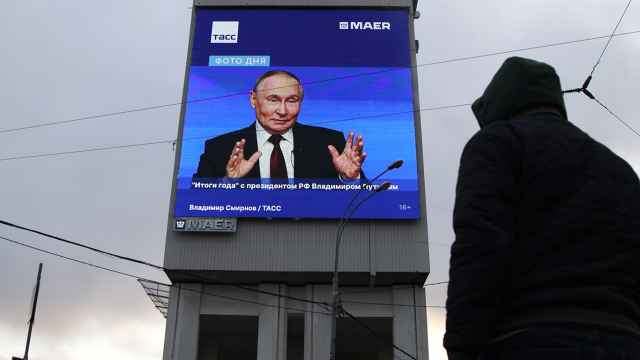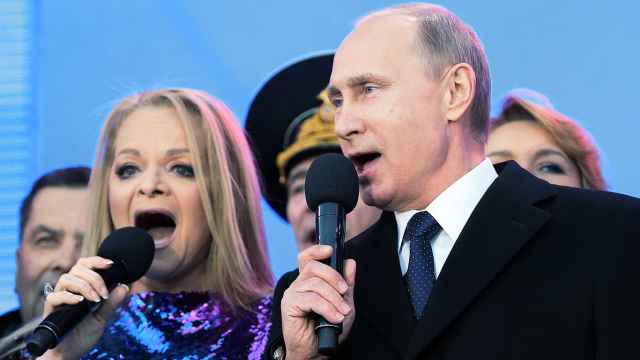A dog slipped into the train, his tail barely whipping past the snap of the doors at Moscow's Park Kultury metro station. There was just enough space between a couple and a young girl. With beady eyes, the dog asked, "Can I lie here?" He sniffed at the girl's lunchbox and curled up in the seat.
In Russia, few stories are more strangely charming than those about the stray dogs that ride Moscow's metro. They get on and off trains, begging for food from passengers who may drop a piece of shwarma. The commuter dogs routinely know where they are from the intercom's voice and regularly visit food vendors in stations. Unlike the dogs I knew from the U.S., who were only seen leashed or found behind windows in PetSmart, Moscow's commuter dogs were a fantastic reality.
From farm helpers to epidemic threats, attitudes toward animals fluctuate greatly depending on how a society's values change. To understand if Moscow was designed for animals, I flew from San Francisco to Moscow to find the dogs.
After the Soviet Union dissolved in 1991, citizens and dogs reinvented their lives. Many dogs retreated into post-industrial zones as they scavenged garbage heaps for leftovers. Then, malls and offices were built over these zones during Russia's transformation into a market economy, forcing the dogs into the city center to find food. In 1999, the privatization of oil brought great wealth to citizens. Upgrading from garbage, more dogs congregated in the metro to find people with extra food. The stations also provided warmth to escape harsh winters. Fortunately for the dogs, the Muscovites affectionately received them. There is even a statue of a dog in Mendeleyevskaya metro station in memory of a stray that was stabbed by a distressed celebrity. Be it Nero or Jesus's marble figure, statues reflect the ideas that people idealize in a time. The Russian public saw the strays as a part of who they were.
When I arrived in Moscow, however, my romantic visions were shattered as the subway dogs were nowhere in sight. I brought fresh sausage daily with me into the train stations to leave behind a pungent trail. I brought my sketchbook to draw dogs but just ended up detailing the stations' lavish Art Deco interiors. But I saw only humans in the train cars.
Have the metro mutts become an urban myth?
I turned to Daria Taraskina, the founder of BIM, one of Moscow's largest privately owned animal shelters, for her expertise. My first impression was nothing short of a furry dream: I was picked up by a black Cadillac filled with dogs and a petite woman. She shuffled through her iPad and showed me 100 former strays living in her home, which were collected one by one off the street.
Taraskina has registered more than 2,500 animals in the past 30 years. Her dedication toward saving stray dogs has gone even as far as housing a lion and two bears abandoned from their former circus troupe. Having collected thousands of strays on the street, she discussed the possibilities behind the vanishing dogs: hot summer weather making the underground uncomfortable and the new metro director's aggressive campaign against the canine passengers. But the most haunting culprits Daria brought up were dog hunters that killed them off.
I read dog hunter discussions on forums describing the most popular spots in Moscow for stray dogs and how best to kill them. Members of one group claim in their manifesto to be the guardians of sanitary norms. An example killing method given was leaving disguised meat filled with isoniazid, a strain of tuberculosis that causes dogs to swell up and die. The dog hunters were a highly organized group seemingly united by their twisted appetite for killing dogs.
But the scale of their killings was an enigma to me. I could not understand how middle-aged adults would have the time, money and desire to get rid of the dogs in such an organized and brutal fashion.
On one hand, any decisions to get rid of the dogs are instantly labeled as cruel. Yet letting dogs roam freely among humans can likely result in dog attacks and disease. To achieve the standards of efficiency and sanitation of a world-class city, Russian policy on strays may increasingly mirror that of other highly structured societies, such as the U.S. or Singapore.
Animals are the silent citizens of the city. To survive, they must adapt to a world built for humans. As buildings rise, urban animals continue to lose their place and their lives. Can a middle ground exist, a zoopolis?
One morning I woke up to a news article titled "Cat Travels Half the Length of Country to Find Family." The cat was apparently forgotten on a family vacation and was spotted getting on and off trains and buses for thousands of kilometers. It arrived shrunken and smelly at the door of its house. Many cats and dogs are in constant search for their long lost owners and are perhaps drawn to our growing cities to maximize the possibility of finding those who left them. Animals will continue to train themselves to pursue their unrequited love, but not every animal is as lucky as this cat. Our empty streets, packed shelters and the stray animals you will never meet can attest to that.
Rebecca Hui is a Fulbright research scholar based in India. She is working on a project entitled "Secret Life of Urban Animals."
A Message from The Moscow Times:
Dear readers,
We are facing unprecedented challenges. Russia's Prosecutor General's Office has designated The Moscow Times as an "undesirable" organization, criminalizing our work and putting our staff at risk of prosecution. This follows our earlier unjust labeling as a "foreign agent."
These actions are direct attempts to silence independent journalism in Russia. The authorities claim our work "discredits the decisions of the Russian leadership." We see things differently: we strive to provide accurate, unbiased reporting on Russia.
We, the journalists of The Moscow Times, refuse to be silenced. But to continue our work, we need your help.
Your support, no matter how small, makes a world of difference. If you can, please support us monthly starting from just $2. It's quick to set up, and every contribution makes a significant impact.
By supporting The Moscow Times, you're defending open, independent journalism in the face of repression. Thank you for standing with us.
Remind me later.






